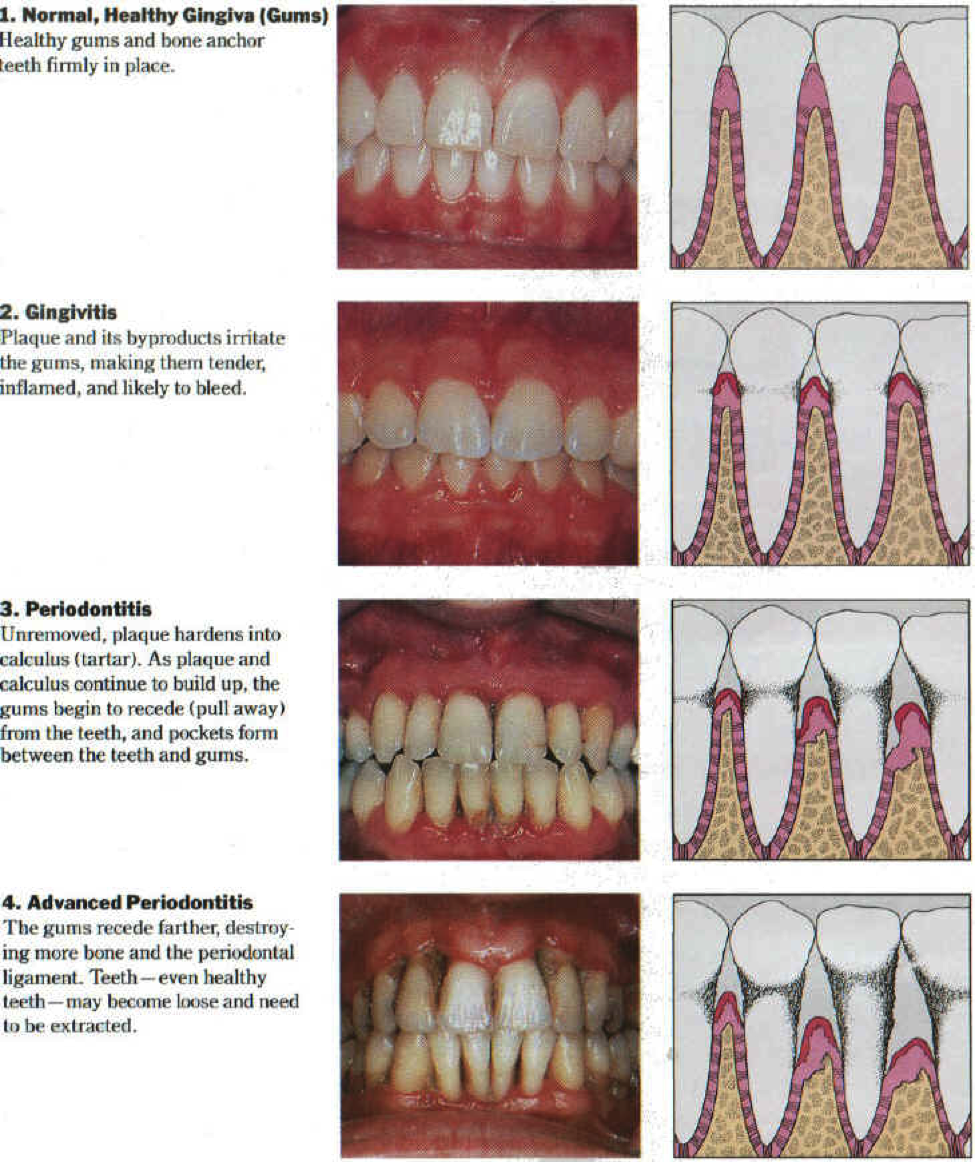What you should know about gum disease
• Three out of four adults in the United States have gum (periodontal) disease.
• Periodontitis is the leading cause of tooth loss in adults.
• Ten percent of American children suffer from juvenile periodontitis.
• The average 2-year-old already has a decayed tooth.
These are shocking statistics when you consider that gum disease is preventable and, if caught early enough, can be treated successfully.
Warning signs for gum disease
• Red, tender or swollen gums
• Bleeding gums while brushing or flossing
• Gums that seem to be pulling away from your teeth
• Chronic bad breath or a bad taste in your mouth
• Teeth that are loose or are separating from each other
Prevention starts at home
While regular dental exams are necessary to remove tartar and detect early signs of gum disease, you play the major role in preventing tartar from forming. Here are some measures you can take to keep your teeth for a lifetime:
• Brush for two to three minutes, twice a day, with fluoridated toothpaste. Be sure to brush along the gumline.
• Floss daily to remove plaque from places your toothbrush can’t reach. Don’t like to floss? Try a floss holder,which can make it easier to insert floss between teeth.
• Although not a substitute for brushing and flossing, a mouth rinse can reduce plaque up to 20 percent. Toothpicks are also helpful in fighting gum disease —ask your dentist about special types designed to keep gums healthy.
• Eat right. Starchy and sugary foods increase plaque, and only a healthy diet provides the nutrients necessary (vitamins A and C, in particular) to prevent gum disease.
• Avoid cigarettes and chewing tobacco, which may contribute to gum disease and oral cancer. Certain medications can also aggravate gum disease, including oral contraceptives, antidepressants and heart medicines.
• Have your dentist correct problems, such as faulty fillings, crowded teeth or teeth-grinding.
• Schedule regular checkups — the surest way to detect early signs of gum disease.
The phases of gum disease
Because it’s usually painless and slow to progress, gum disease can easily reach an advanced stage, resulting in deterioration of gums and bone structure ands then tooth loss. So how do you know if you have gum disease?

